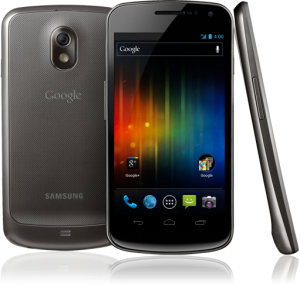Now that Apple has announced the iPhone 5S, it’s time for a side-by-side for comparison against the previous iPhone 5 and the de facto Android flagship, the Samsung Galaxy S4.
The first question is, is it an upgrade over the iPhone 5? The answer is yes, specifically in the processor, the camera, and Touch ID. Apple’s “S” releases are normally minor updates. So this is actually significant. Apple obviously is feeling the competitive pressure.
The next question is how does it fare against the Galaxy S4? By the numbers you would see that Galaxy S4 would win. But most numbers don’t matter much (e.g. processor speed, and megapixel count) without context. So I won’t even go into the 64-bit (although really that is significant). Numbers are nothing compared to the experience.
I’d say you can’t go wrong with either iPhone 5S or Samsung Galaxy S4. Personally, I’d go for the iPhone 5S due to four reasons: design (understated elegance), the size (I like my phones small and light), the camera (True Tone flash, 2.2/f aperture and 15% larger sensor) and Touch ID (definitely more secure than Android’s rather gimmicky face unlock).
| Apple iPhone 5S | Apple iPhone 5 | Samsung Galaxy S4 | |
| Size | 123.8 x 58.6 x 7.6mm | 123.8 x 58.6 x 7.6mm | 136.6 x 69.8 x 7.9 mm |
| Weight | 112 g | 112 g | 130 g |
| Network | GSM 850 / 900 / 1800 / 1900 | GSM 850 / 900 / 1800 / 1900 | GSM 850 / 900 / 1800 / 1900 |
| HSDPA 850 / 900 / 1900 / 2100 | HSDPA 850 / 900 / 1900 / 2100 | HSDPA 900 / 1900 / 2100 | |
| LTE | LTE | LTE | |
| Display | LED-backlit IPS TFT, capacitive touchscreen, 16M colors | LED-backlit IPS TFT, capacitive touchscreen, 16M colors | Super AMOLED HD capacitive touchscreen, 16M colors |
| 640 x 1136 pixels, 4 inches (326 ppi) | 640 x 1136 pixels, 4 inches (326 ppi) | 1080 x 1920 pixels, 5.0 inches (441 ppi) | |
| Processor | unspecified processor, unspecified GPU, Apple A7 chipset, 64-bit | unspecified processor, unspecified GPU, Apple A6 chipset | Quad-core 1.6 GHz Cortex-A15 & quad-core 1.2 GHz Cortex-A7, PowerVR SGX 544MP3 GPU |
| RAM | unspecified | unspecified | 1/2 GB RAM |
| Internal Storage | 16/32/64 GB | 16/32/64 GB | 16/32/64 GB |
| External Storage | No External Memory | No External Memory | Up to 64GB |
| Data | Wi-Fi 802.11 a/b/g/n dual-band | Wi-Fi 802.11 a/b/g/n dual-band | Wi-Fi 802.11 a/b/g/n dual-band |
| Bluetooth | v4.0 with A2DP | v4.0 with A2DP | v4.0 with A2DP |
| NFC | none | none | yes |
| Operating System | iOS 7 | iOS 6 | Android v4.2 Jelly Bean |
| Camera | 8 megapixel AF with True Tone dual-LED flash and f/2.2 aperture lens, 15-percent larger sensor, 10fps burst | 8 megapixel AF, f/2.4 aperture lens | 13 megapixel AF, f/2.2 aperture lens |
| Video | 1080p at 30fps, LED video light | 1080p at 30fps, LED video light | 1080p at 30fps, LED video light |
| Apps | About 900K from the Apple App Store | About 900K from the Apple App Store | About 1M from Google Play + access to non-market apps |
| Battery | Standard battery, Li-Po | Standard battery, Li-Po | Standard battery, Li-Ion 2600 mAh |
| Standby | Up to 270 h (3G) | Up to 225 h (3G) | Up to 370 h (3G) |
| Talk-time | Up to 10 h (3G) | Up to 8 h (3G) | Up to 117 h (3G) |
